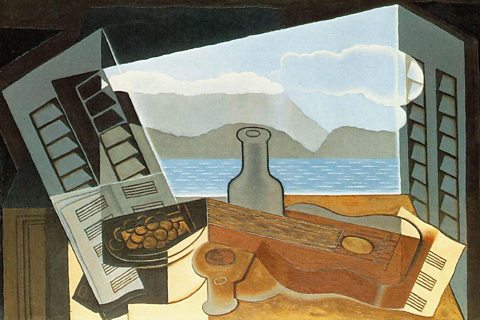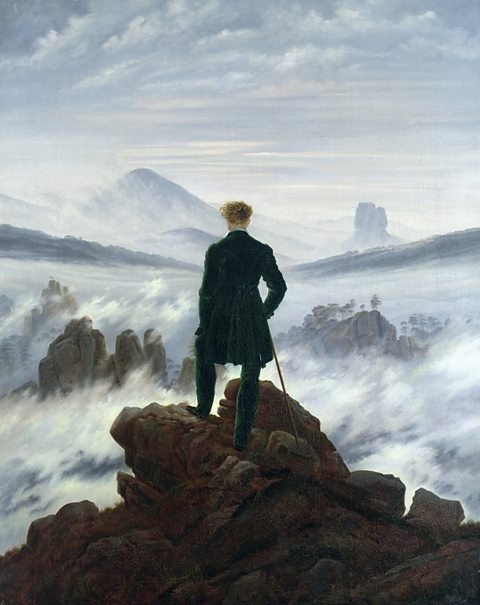Creating depth and distance
Changing tone can be used to suggest distance and depth in an artwork.
progressiveGradually changing, for example from light to dark. tone can be used to gradually change from a light tone in the foregroundThe part of a composition that appears closest to the viewer. to a dark tone in the backgroundThe part of a composition that appears furthest from the viewer. , or a dark tone in the foreground to a light tone in the background.
This suggests a change in the amount of light hitting objects that is related to how far they are from the viewer.


In The Open Window (1921), Juan Gris uses black and dark colours to show parts of the room that are in shade. Light tones are used in the foreground to suggest sunlight hitting the table and a sheet of paper.
Through the window, a line of dark hills appears closer than lighter mountains behind. The pale tones of the sky and white clouds suggest they are the elements furthest from the viewer.
Caspar David Friedrich uses his darkest tones in the foreground of The Wanderer Above the Sea of Fog (1818).
The central figure and the rock he stands appear almost as silhouetteA (usually dark) shape or outline with no additional features. . The highest values show swirling white fog beneath the man.
Progressive tones show the hills and rocks, the fog and the sky getting brighter and lighter in the distance.